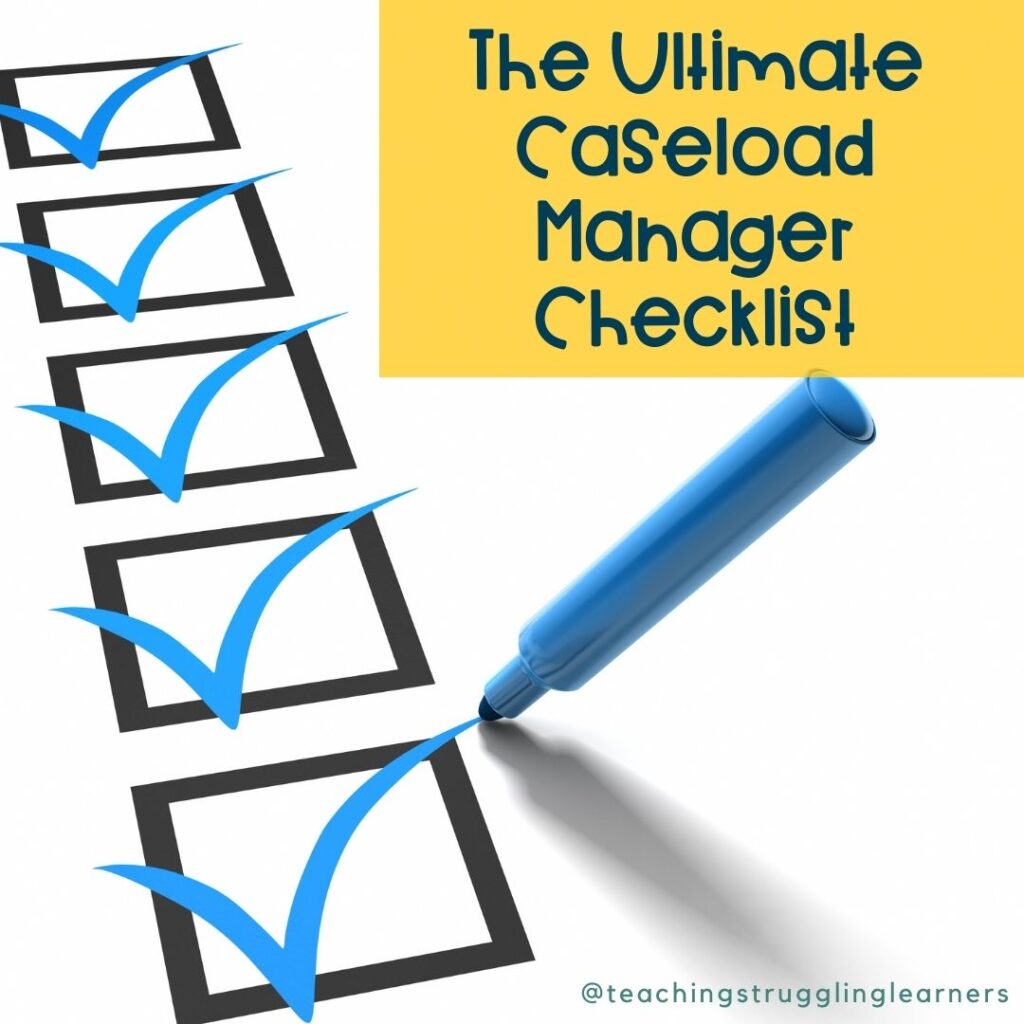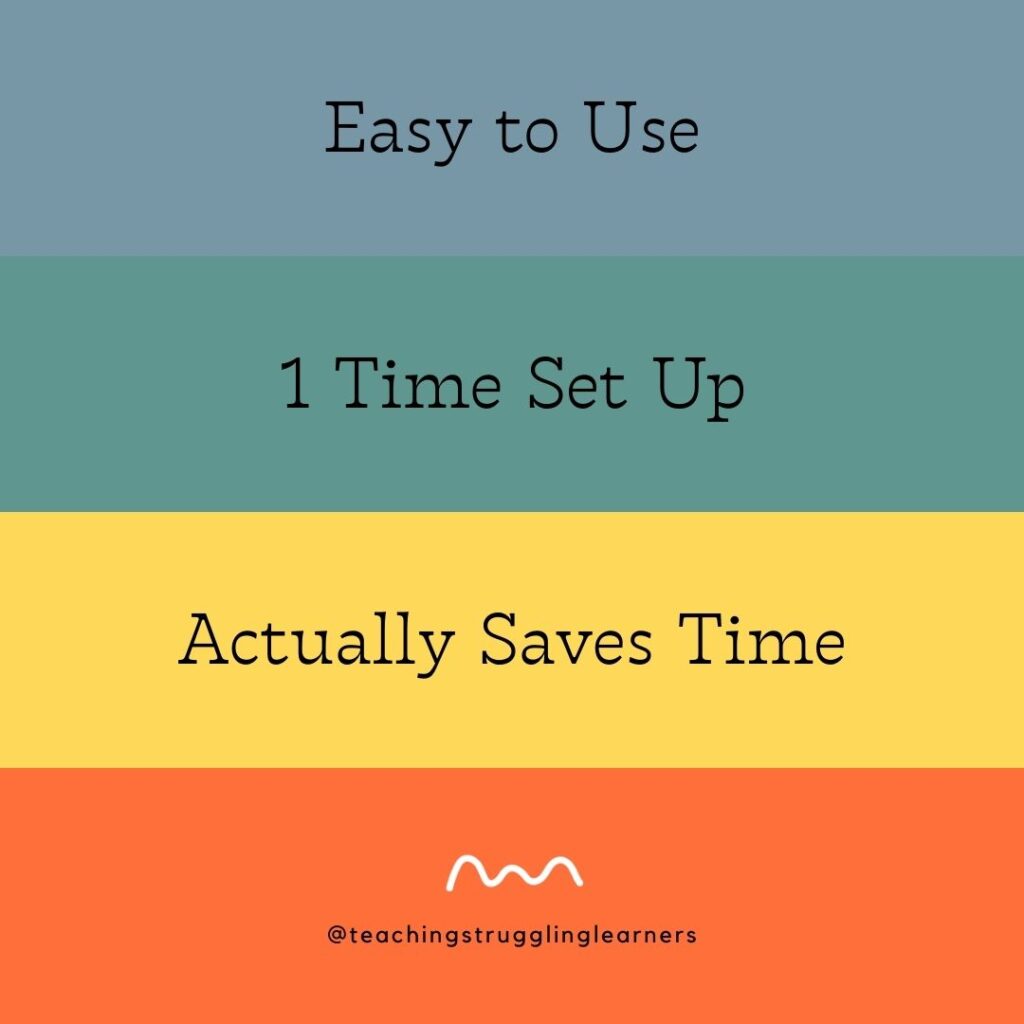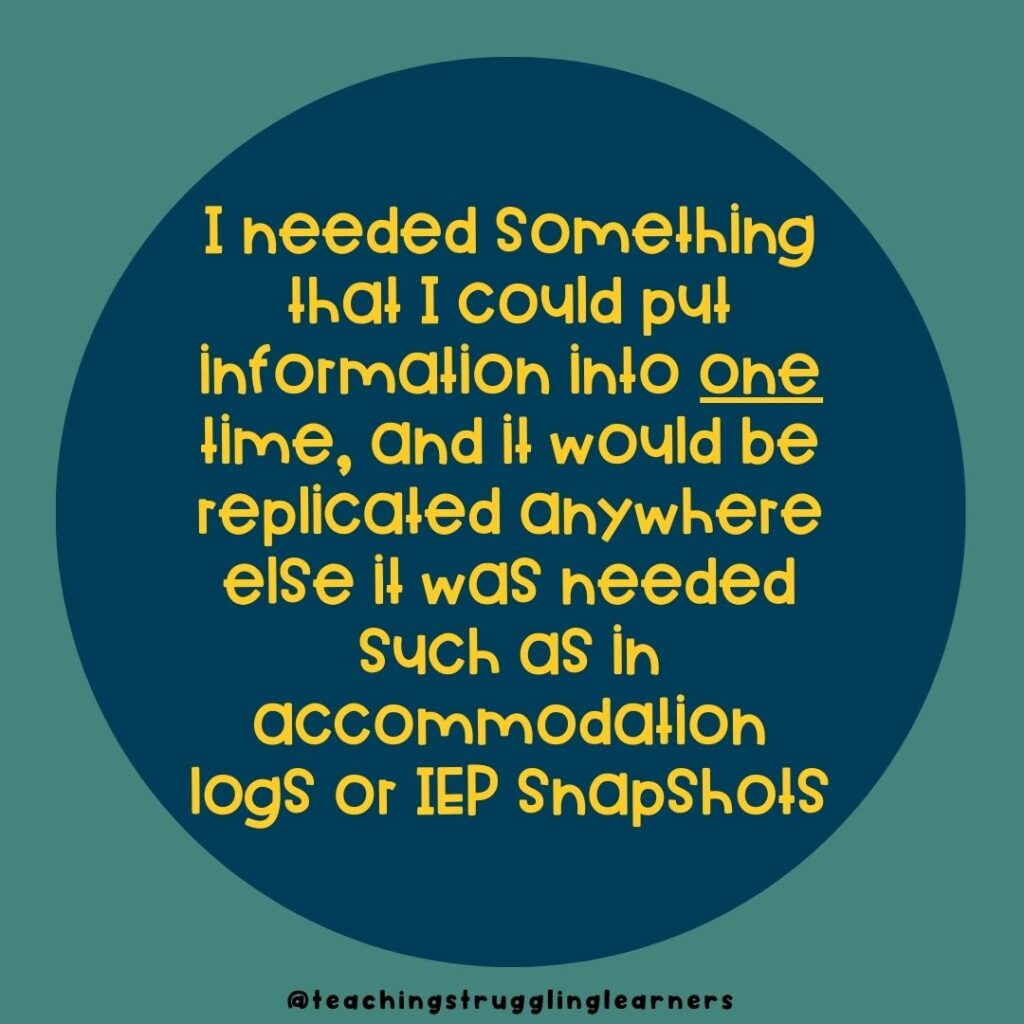The Ultimate Caseload Manager Checklist

They say that special education teachers are a “different breed” and maybe they are right, whoever “they” is. The fact is that special education teachers juggle so much every day. It is an absolute miracle that any of them make it through a week, let alone a school year. Between planning and teaching highly individualized lessons, preparing all of the materials, providing modifications or accommodations throughout the day, corresponding with other teachers, parents, specialists, and administrators, and planning for, scheduling, and writing IEPs….special education teachers are constantly buried under all the things they have to do… Something has to give. Things are going to get forgotten, unless they can get a little bit of help. That is where this caseload manager checklist comes in.
A caseload manager can make a huge difference in keeping special education teachers on top of their responsibilities.
Since special education teachers have so much to do, one important way that I found to help myself stay on top of it was an effective caseload manager. Over the years, I tried a lot of different things. I tried putting the due dates for IEPs and re-evals in my calendar for the entire year. One year I used folders, binders, and cabinet drawers to keep the dates and paperwork organized. I had checklists upon checklists, but still I just couldn’t keep a handle on everything. It always felt like I was 2 or 10 steps behind.
Part of being a special education teacher is always feeling like you’re a little behind. But I wanted to feel more in control of the chaos that is special education.
Finally, one day I sat down and made a list of all the things that I needed to have streamlined. I realized that I needed something that was all-in-one. Something that I didn’t have to input the same students’ name over and over again to create tracking sheets, lists, or whatever. It took me a while, but I finally came up with my caseload manager checklist.
So, here are the things that I decided I had to have:
#1 The caseload manager had to be easy to use.
It was important that the manager be easy to use and implement. That meant that my caseload manager checklist included using technology that was relatively familiar or could at least learn quickly through use. Also, it had to be software or something that I had access to right then. I didn’t want to have to do research and buy stuff. It needed to be something that was familiar enough that I had it already.

#2 The caseload manager had to be something I could set-up one time and just update as needed.

When I created my caseload manager checklist, I had several friends who had sheets or documents that they used to keep track of IEP dates, goals, accommodations, and other things. The problem was that every time an IEP was updated, they had to redo the entire thing. That wasn’t going to work for me because I didn’t have time for that and quite frankly, they didn’t either which is why they never really used them consistently.
I decided that I needed something to put information into one time, and it would replicate it anywhere else it was needed. This included accommodation logs or IEP snapshots to hand out. Obviously when goals get updated, the manager would need to be also, but I didn’t want to have to re-input everything that was the same, like name and birthdate. Also, I wanted something that could carry over for the following year if I had any of the same students. Let me tell you, that made a huge difference when I was getting things ready from year to year.
#3 This was the most important thing for me. The caseload manager had to life easier, not add another thing for me to do in my already hectic schedule.
It was important that this would save me time and energy over the course of the year. Setting up something like this would take time initially, but by the end of the year, I wanted a net gain on time.
So, I added a list of things that I wanted the manager to make automatically to my caseload manager checklist.
The caseload manager needed to help track IEPs and re-eval rates obviously. It needed to track classroom and testing accommodations, parent communication, and consultations with students and teachers as needed. I wanted something that made lists for me to be able to create checklists for everything including paperwork. Making IEP Snapshots for all of the students on my caseload was a must. Finally, I wanted somewhere to record goals, and data from progress monitoring. Graphing it for me to include in progress reports was essential.
It took me many hours to flesh all of this out, but I finally did create my own caseload manager several years ago. It has saved me countless hours, especially since it auto-populates my IEP Snapshots for me. I created mine in Excel, and if you would like to check it out click here. For the version I’ve shared, I’ve blocked the cells or spaces that are critical to auto-populating information. So even those who aren’t comfortable with Excel can use it easily. For the more advanced Excel users, there is a more open version for them to manipulate. Just be aware I can’t fix things if you dabble a little too much and change links around.
If you’re looking to make your own caseload manager, spend some time really thinking about what would make your life easier and what exactly you need to get the job done more efficiently. I have another podcast episode where I discuss how to make your own caseload manager.
